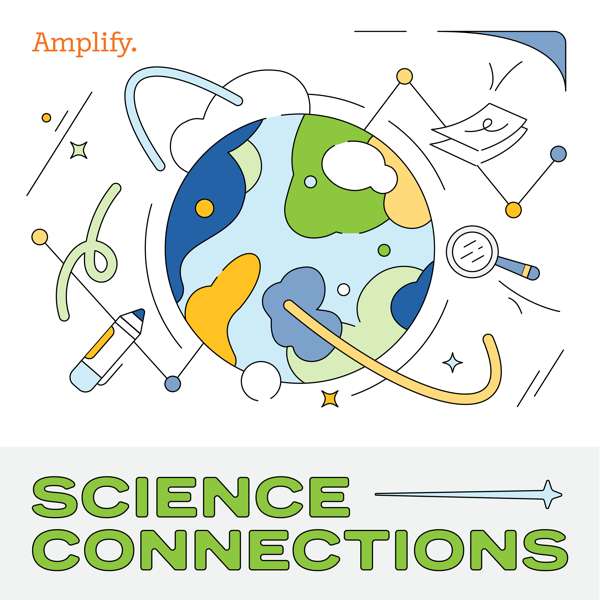Join the Community of Safety Pros today!
Mentioned in this episode:
The National Safety Council
The NSC Safe Driving Kit
Preliminary estimates from the National Safety Council indicate motor vehicle deaths dipped slightly – 1% – in 2017, claiming 40,100 lives versus the 2016 total of 40,327. The small decline is not necessarily an indication of progress, as much as a leveling off of the steepest two-year increase in more than 50 years.
The 2017 assessment is 6% higher than the number of deaths in 2015. If the estimate holds, it will be the second consecutive year that motor vehicle deaths topped 40,000.
About 4.57 million people were injured severely enough to require medical attention in motor vehicle crashes in 2017, and costs to society totaled $413.8 billion. Both figures are about 1% lower than 2016 calculations.
So what can we do about all of this? A driver safety program should keep the driver safe, as well as others who share the road. If necessary, the program must work to change driver attitudes, improve behavior, and increase skills to build a "be safe" culture. By instructing your employees in basic safe driving practices and then rewarding safety-conscious behavior, you can help your employees, and their families avoid tragedy.
Do current prevention efforts address the problem?
• Nearly all legislation focuses on banning only handheld phones or only texting while driving.
• All state laws and many employer policies allow hands-free cell phone use.
• Public opinion polls show people recognize the risks of talking on handheld phones and texting more than they realize the risks of hands-free phones.
• Many drivers mistakenly believe talking on a hands-free cell phone is safer than handheld.
A hands-free device most often is a headset that communicates via wired or wireless with a phone, or a factory-installed or aftermarket feature built into vehicles that often includes voice recognition. Many hands-free devices allow voice-activated dialing and operation.
Hands-free devices often are seen as a solution to the risks of driver distraction because they help eliminate two obvious risks – visual, looking away from the road and manual, removing your hands off of the steering wheel. However, the third type of distraction can occur when using cell phones while driving – cognitive, taking your mind off the road.
Hands-free devices do not eliminate cognitive distraction.
The amount of exposure to each risk is vital. Crashes are a function of the severity of each risk and how often the risk occurs. Most people can recognize when they are visually or mechanically distracted and seek to disengage from these activities as quickly as possible. However, people typically do not realize when they are cognitively distracted, such as taking part in a phone conversation; therefore, the risk lasts much, much longer. This likely explains why researchers have not been able to find a safety benefit to hands-free phone conversations.
The National Safety Council has compiled more than 30 research studies and reports by scientists around the world that used a variety of research methods, to compare driver performance with handheld and hands-free phones. All of these studies show hands-free phones offer no safety benefit when driving.
Conversation occurs on both handheld and hands-free phones. The cognitive distraction from paying attention to a conversation – from listening and responding to a disembodied voice – contributes to numerous driving impairments. Specific driving risks are discussed in detail later in this paper. First, let us look at why hands-free and handheld cell phone conversations can impair your driving ability.
Multitasking is a myth. Human brains do not perform two tasks at the same time. Instead, the brain handles tasks sequentially, switching between one task and another. Brains can juggle tasks very rapidly, which leads us to erroneously believe we are doing two tasks at the same time. In reality, the brain is switching attention between tasks – performing only one task at a time.
The brain not only juggles tasks, but it also juggles focus and attention. When people attempt to perform two cognitively complex tasks such as driving and talking on a phone, the brain shifts its focus (people develop "inattention blindness"). Important information falls out of view and is not processed by the brain. For example, drivers may not see a red light. Because this is a process people are not aware of, people can't realize they are mentally taking on too much.
Brain researchers have identified "reaction-time switching costs," which is a measurable time when the brain is switching its attention and focus from one task to another. Research studying the impact of talking on cell phones while driving has identified slowed reaction time to potential hazards are tangible, measurable, and risky. Longer reaction time is an outcome of the brain switching focus, which impacts driving performance.
The cost of switching could be a few tenths of a second per switch. When the brain repeatedly switches between tasks, these costs add up.
Even small amounts of time spent switching can lead to significant risks from delayed reaction and braking time. For example, if a vehicle is traveling 40 mph, it goes 120 feet before stopping, which equals eight car lengths (an average car length is 15 feet). A fraction-of-a-second delay would make the car travel several additional car lengths. When a driver needs to react immediately, there is no margin for error.
Brains may face a "bottleneck" in which different regions of the brain must pull from a shared and limited resource for seemingly unrelated tasks, constraining the mental resources available for the tasks.
Research has identified that even when different cognitive tasks draw on two different regions of the brain, we still can have performance problems when trying to do dual tasks at the same time, which may help explain why talking on cell phones could affect what a driver sees: two usually unrelated activities become interrelated when a person is behind the wheel. These tasks compete for our brain's information processing resources. There are limits to our mental workload.
The workload of information processing can bring risks when unexpected driving hazards arise.31 Under most driving conditions, drivers are performing well-practiced, automatic driving tasks.
For example, without thinking about it much, drivers slow down when they see yellow or red lights and activate turn signals when intending to make a turn or lane change. These are automatic tasks for experienced drivers. Staying within a lane, noting the speed limit and navigation signs, and checking rear- and side-view mirrors also are automated tasks for most experienced drivers. People can do these driving tasks safely with an average cognitive workload.
During the vast majority of road trips, nothing terrible happens, as it should be. But that also can lead people to feel a false sense of security or competency when driving. Drivers may believe they can safely multitask; however, a driver always must be prepared to respond to the unexpected.
The industrial ergonomics field has been able to identify physical workload limits and, in the same way, the workload limits of our brains now are being defined. The challenge to the general public is the bottlenecks and limits of the brain are more difficult to feel and see than physical limits.
Multitasking Impairs Performance
We can safely walk while chewing gum in a city crowded with motor vehicles and other hazards. That is because one of those tasks – chewing gum – is not a cognitively demanding task.
When chewing gum and talking, people still can visually scan the environment for potential hazards.
People do not perform as well when trying to perform two attention-demanding tasks at the same time. 32 Research shows that even pedestrians don't effectively monitor their environment for safety while talking on cell phones. 33-35 The challenge is managing two tasks demanding our cognitive attention.
Indeed, most would agree that driving a vehicle involves a more complex set of tasks than walking.
What are primary and secondary tasks? What happens when people switch attention between them?
When people perform two tasks at the same time, one is a primary task and the other a secondary task. One task gets full focus (primary) and the other moves to a back burner (secondary). People can move back and forth between primary and secondary tasks.
The American National Standards Institute publication ANSI Z15.1, Safe Practices for Motor Vehicle Operations, offers guidelines and best practices for motor vehicle safety programs. Also, the Network of Employers for Traffic Safety (NETS) assisted in developing a 10-step program.
NETS 10-step program to minimize crash risk
The Program provides guidelines for what an employer can do to improve traffic safety performance and reduce the risk of motor vehicle crashes. Following these steps helps to ensure that you hire capable drivers, only allow eligible drivers to drive on company business, and maintain company vehicles properly. Adherence to these ten steps can also help to keep your motor vehicle insurance costs as low as possible. These steps are from the NETS Traffic Safety Primer: A Guidebook for Employers.
Step 1: Senior management commitment and employee involvement
Senior management can provide leadership, set policies, and allocate resources (staff and budget) to create a safety culture. Actively encouraging employee participation and involvement at all levels of the organization is a good practice and will help the effort to succeed. Workers and their representatives must be involved in the initial planning phase.
Step 2: Written policies and procedures
A written statement emphasizing the commitment to reducing traffic-related deaths and injuries is essential to a successful program. Create a clear, comprehensive, and enforceable set of traffic safety policies and communicate them to all employees. Post them throughout the workplace, distribute copies periodically, and discuss the policies at company meetings. Offer incentives for sticking to the rules, and point out the consequences of disregarding them.
Step 3: Driver agreements
Establish a contract with all employees who drive for work purposes, whether they drive assigned company vehicles or personal vehicles. By signing an agreement, the driver acknowledges awareness and understanding of the organization's traffic safety policies, procedures, and expectations regarding driver performance, vehicle maintenance, and reporting of moving violations.
Step 4: Motor vehicle record (MVR) checks
Check the driving records of all employees who drive for work purposes. Screen out drivers who have poor driving records since they are most likely to cause problems in the future. Periodically review the MVR to ensure that the driver maintains a good driving record. Clearly define the number of violations an employee/driver can have before losing the privilege of driving for work, and provide training where indicated.
Step 5: Crash reporting and investigation
Establish and enforce a crash reporting and investigation process. All crashes, regardless of severity, should be reported to the employee's supervisor as soon as feasible after the incident. Company policies and procedures should guide drivers through their responsibilities in a crash situation. Review all crashes to determine their cause and whether or not the incidents were preventable. Understanding the root causes of crashes and why they are happening, regardless of fault, forms the basis for eliminating them in the future.
Step 6: Vehicle selection, maintenance, and inspection
Properly maintaining and routinely inspecting company vehicles is an essential part of preventing crashes and related losses. Review the safety features of all vehicles to be considered for use. Choose vehicles that demonstrate "best in class" status for crashworthiness and overall safety.
Regular maintenance preventive maintenance should be done at specific mileage intervals consistent with the manufacturer's recommendations. A mechanic should do a thorough inspection of each vehicle at least annually with documented results placed in the vehicle's file.
Personal vehicles used for company business are not necessarily subject to the same criteria and are generally the responsibility of the owner. However, personal vehicles used on company business should be maintained in a manner that provides the employee with maximum safety and reflects positively on the company.
Step 7: Disciplinary action system
Develop a strategy to determine the course of action after a moving violation and/or "preventable" crash. The system should provide for progressive discipline if a driver begins to develop a pattern of repeated traffic violations and/or preventable crashes. The system should describe what specific action(s) will be taken if a driver accumulates a certain number of violations or preventable crashes in any pre-defined period.
Step 8: Reward/incentive program
Develop and implement a driver reward/incentive program to make safe driving an integral part of your business culture. Safe driving behaviors contribute directly to the bottom line and should be recognized as such. Incorporate driving performance into the overall evaluation of job performance. Reward and incentive programs typically involve recognition, monetary rewards, special privileges, or other incentives to motivate positive behaviors.
Step 9: Driver training/communication
Provide continuous driver safety training and communication. Even experienced drivers benefit from periodic training and reminders of safe driving practices and skills. It is easy to become complacent and not think about the consequences of poor driving habits.
Step 10: Regulatory compliance
Ensure adherence to highway safety regulations. It is essential to establish which, if any, local, state, and/or Federal Regulations govern your vehicles and/or drivers. These regulations may involve, but may not necessarily be limited to the:
- Federal Motor Carrier Safety Administration
- U.S. Department of Transportation
- National Highway Transportation Safety Administration
- Federal Highway Administration
- Employment Standards Administration
Promote safe driving practices
The safety issues described below should be addressed in an employee awareness and training program.
Secure materials for transport: Tools or equipment should be secured while being transported to prevent unsafe movement. During a crash or when making sudden maneuvers, loose objects can slide around or become airborne, injuring the driver or passengers. Objects that could become a hazard should be secured or stored outside the passenger compartment.
Seat belt use: Seat belts are the single most effective means of reducing deaths and severe injuries in traffic crashes.
Alcohol and drug-impaired driving: It is estimated that three in every 10 Americans will be involved in an impaired driving-related crash sometime in their life. Alcohol, certain prescription drugs, over-the-counter medications, and illegal drugs can all affect a person's ability to drive safely due to decreased alertness, concentration, coordination, and reaction time.
Fatigued driving: Fatigued or drowsy driving may be involved in more than 100,000 crashes each year, resulting in 40,000 injuries and 1,550 deaths. Employees should be well-rested, alert, and sober on the road, so they are in a position to defend themselves from drivers who do not make the same choice. Train employees to make smart decisions when they're behind the wheel, on and off the job.
Aggressive driving: Employees commuting to and from work or traveling for work often get caught up in bottlenecks and traffic delays, wasting their time, and reducing their productivity. These situations create frustration that can spark aggressive driving behavior. Aggressive driving acts include excessive speed, tailgating, failure to signal a lane change, running a red light, and passing on the right. The best advice is to avoid engaging in conflict with other drivers and to allow others to merge.
Young drivers: Under Federal law, 16-year-old workers are prohibited from driving as part of their job, and 17-year-olds may drive for work only under strictly limited circumstances. Some state laws may be more restrictive than federal laws. For more information on child labor laws, visit, www.youthrules.dol.gov or www.cdc.gov/niosh/topics/youth/.
Be sure to check out the National Safety Council and get their FREE online Safe Driving Kit HERE.
Please listen and share this episode with others. If you want to go more in-depth on this and other topics - become a SafetyPro Community member (FREE to join).
To get access to premium content like bonus materials, downloads, live chats with the Safety Pro (coming soon) - become a PREMIUM member!
Join the Community of Safety Pros today!

 Our TOPPODCAST Picks
Our TOPPODCAST Picks  Stay Connected
Stay Connected







